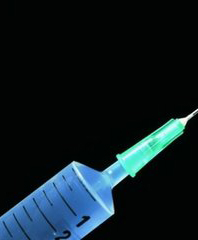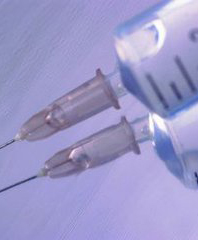


- 全部

- 重症超声

- 镇静镇痛

- 重症神经

- 重症感染与感控
最热文档/重症神经
-
-
神经指南:甘露醇治疗颅内压增高中国专家共识
- 甘露醇是治疗颅内压(ICP)增高最常使用的一线药物,临床应用广泛。但由于
对 ICP 增高的病理生理机制、甘露醇的药理作用机制的认识不同,临床上甘露醇
不规范使用的现象普遍存在,比如无指征的使用、不注意使用的剂量与间隔时间、
忽略使用过程中的监测等,导致甘露醇在临床上不合理应用带来相关并发症。为
此,中华医学会神经外科分会小儿神经外科学组和神经重症管理协作组联合国内
神经外科、神经重症及重症医学等领域的专家共同讨论撰写了《甘露醇治疗颅内
压增高中国专家共识》(简称共识),希望通过共识规范使用甘露醇,避免滥用、
错用,提高甘露醇治疗的合理性、安全性和有效性.
2021-10-28
-
-
BEST PRACTICES IN THE MANAGEMENT OF TRAUMATIC BRAIN INJURY
- Traumatic brain injury (TBI) is a disease process that carries major public health and socioeconomic consequences.
2018-05-10
-
-
HYPOCAPNIA
- ARTERIAL carbon dioxide tension represents the balance between the production and elimination of carbon dioxide, and in healthy persons, it is maintained within narrow physiologic limits.
2018-05-10
-
-
The Use of Blood-Based Biomarkers to Improve the Design of Clinical Trials of Traumatic Brain Injury
- Traumatic brain injury (TBI) is a major health and socioeconomic problem representing the leading cause of death and disability in the United States and worldwide with no effective treatment.
2018-05-10
-
-
Ten things you need to know to practice neurological critical care
- Care of the critically ill neurologic patient,more commonly referred to as neurocritical care,has matured through new knowledge,policy and administration,advances in imaging and monitoring techniques,and above all the introduction of neurointensivists and neu-roscience intensive care units.
2018-05-09
-
-
The Importance of Brain Temperature in Patients after Severe Head Injury: Relationship to Intracranial Pressure, Cerebral Perfusion Pressure, Cerebral Blood Flow, and Outcome
- Brain temperature was continuously measured in 58 patients after severe head injury and compared to rectal temperature, intracranial pressure, cerebral blood flow, and outcome after 3 months.
2018-05-09
-
-
Targeted temperature management in critical care: A report and recommendations from five professional societies
- Representatives of five international critical care societies convened topic specialists and a nonexpert jury to review, assess, and report on studies of targeted temperature management and to provide clinical recommendations.
2018-05-09
-
-
Regulation of the cerebral circulation bedside assessment and clinical implications
- Regulation of the cerebral circulation relies on the complex interplay between cardiovascular, respiratory, and neural physiology.
2018-05-09
-
-
Regulation of Cerebral Autoregulation by Carbon Dioxide
- Cerebral autoregulation describes a mechanism that maintains cerebral blood flow stable despite fluctuating perfusion pressure.
2018-05-09
-
-
Multimodality Neuromonitoring in Adult Traumatic Brain Injury
- Neuromonitoring plays an important role in the management of traumatic brain injury.
2018-05-09
-
-
Multimodality monitoring and telemonitoring in neurocritical care:from microdialysis to robotic telepresence
- This review will highlight the state-of-the-art in brain monitoring in neurointensive care and define methods of integrating this technology into patient care using telemedicine methods.
2018-05-09
-
-
Management of Intracranial Hypertension in Head Injury Matching Treatment with Cause
- Raised intracranial pressure(ICP) is common after head injury and strongly associated with mortality and morbidity.
2018-05-09
-
-
Maintaining Cerebral Perfusion Pressure is a Worthy Clinical Goal
- Cerebral perfusion pressure (CPP) is one aspect of an all-encompassing approach in the management of traumatic brain injury (TBI).
2018-05-08
-
-
Fluid therapy in neurointensive care patients ESICM consensus and clinical practice recommendations
- To report the ESICM consensus and clinical practice recommendations on fluid therapy in neurointensive care patients.
2018-05-08
-
-
Evaluation of a New Brain Tissue Probe for Intracranial Pressure,Temperature,and Cerebral Blood Flow Monitoring in Patients with Aneurysmal Subarachnoid Hemorrhage
- To evaluate an intraparenchymal probe for intracranial pressure (ICP) and temperature (TEMP) monitoring as well as determination of cerebral hemodynamics using a near-infrared spectroscopy (NIRS) and indocyanine green (ICG) dye dilution method (NIRS-ICP probe).
2018-05-08
-
-
Critical evaluation of the Lund Concept for Treatment of Severe Traumatic Head injury, 25 Years after its introduction
- When introduced in 1992, the Lund concept(LC) was the first complete guideline for treatment of severe traumatic brain injury (s-TBI).
2018-05-08
-
-
Critical Care Management of Patients Following Aneurysmal Subarachnoid Hemorrhage Recommendations from the Neurocritical Care Society’s Multidisciplinary Consensus Conference
- Subarachnoid hemorrhage(SAH) is an acute cerebrovascular event which can have devastating effects on the central nervous system as well as a profound impact on several other organs.
2018-05-08
-
-
Consensus summary statement of the International Multidisciplinary Consensus Conference on Multimodality Monitoring in Neurocritical Care
- The Neurocritical Care Society(NCS) in collaboration with the European Society of Intensive Care Medicine(ESICM),the Society for Critical Care Medicine(SCCM), and the Latin America Brain Injury Consortium(LABIC) commissioned a consensus conference on monitoring patients with acute neurological disorders that require intensive care management.
2018-05-08
-
-
Cardiac Output and Cerebral Blood Flow The Integrated Regulation of Brain Perfusion in Adult Humans
- Cerebral blood flow (CBF) is rigorously regulated by various powerful mechanisms to safeguard the match between cerebral metabolic demand and supply.
2018-05-08
-
-
A prospective, randomized clinical trial to compare the effect of hyperbaric to normobaric hyperoxia on cerebral metabolism, intracranial pressure, and oxygen toxicity in severe traumatic brain injury
- Oxygen delivered in supraphysiological amounts is currently under investigation as a therapy for severe traumatic brain injury (TBI).
2018-05-08